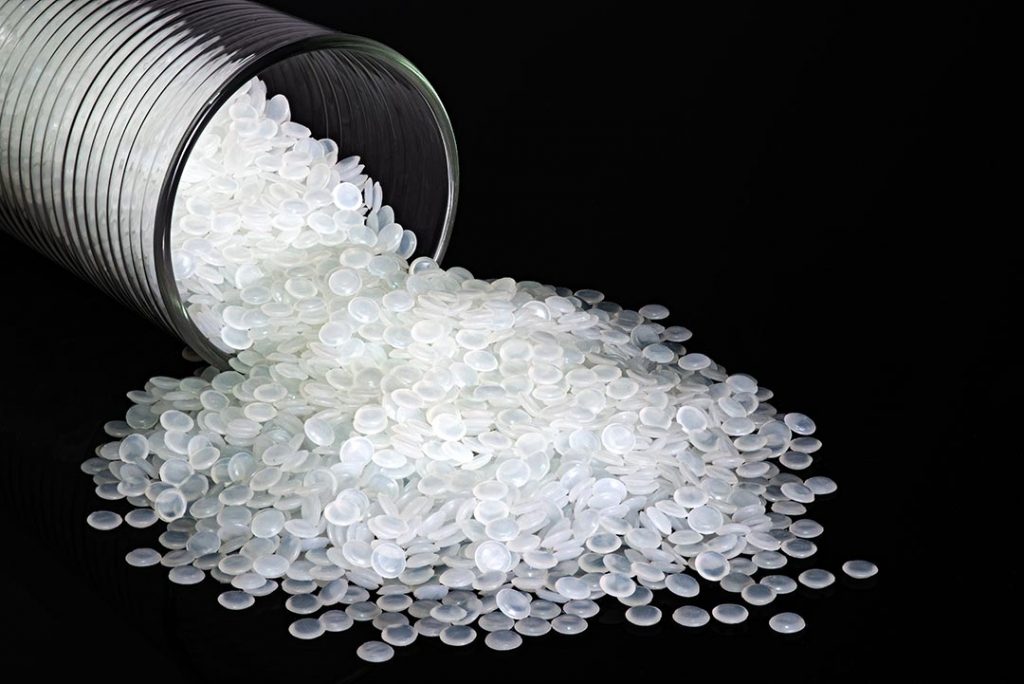
Kevin Kelly, CEO of California-based Emerald Packaging, said his company already internally recycles clear scrap plastics, but needs support to reach its diversion and PCR goals. | Praethip Docekalova/Shutterstock
Post-consumer resin is the way forward, the head of flexible film producer Emerald Packaging said. But it’s going to take commitment, collaboration and follow-through from many different actors to reach full PCR potential.
Kevin Kelly, CEO of California-based Emerald Packaging, said his company already internally recycles clear scrap plastics, but needs support to reach its diversion and PCR goals.
Emerald supplies customers such as Fresh Express, Organic Girl, Del Monte, Snow Crest and American Licorice Company, among others. Kelly said as someone who has always cared about the environment, when he learned about the Ellen MacArthur Foundation, he was all-in.
The Ellen MacArthur Foundation is an international organization that advances the circular economy, including taking pledges from brands to increase recycled content use, decrease overall virgin plastic use and publicly report it.
“We made an Ellen MacArthur commitment to have half our material be post-consumer resin by 2025, which sounded reasonable to me,” he said. But then he started trying to actually source PCR after making the pledge in March of 2022.
“You learn quickly it’s harder than you think to source this stuff,” he said. “It’s like – wow.”
He then realized the same thing that many others recently have: PCR commitments vastly outweigh the actual amount of PCR available on the market.
Kelly signed an offtake agreement for a million pounds of PCR annually from nearby Circulus, but said it took a year and a half for the company to get FDA approval to use the PCR in food packaging. It’s only been in the last month or two that Emerald has received the material, and it’s far less than he needs to hit the 50% goal.

Kevin Kelly
“We have a commitment to bring a million pounds a year in, but that’s against a total usage of 20 million pounds,” Kelly said. “So where is the rest of this stuff coming from?”
He added that he’s lucky that he knows Circulus well and is “happy they’ve been able to get FDA approval and we can start pulling it in,” but he never would have guessed how difficult it is to source PCR.
He suspects legislators crafting PCR minimum mandates may not realize it either. And then there’s the problem that even if PCR producers could build more facilities quickly, there’s not currently a steady enough stream of feedstock, especially for clear, food-grade material.
States with mandates, such as California and Washington, will certainly help drive the market, Kelly said, but that takes time.
“There’s just a lot of stuff that needs to get worked out. I think that one place we ought to be looking as brands and industry and whatnot as we talk about EPR is funding some of these plants, or paying for the collection of material, so the plants actually have material to run,” Kelly said.
However, there are bright spots. Kelly said he thinks the problems have been well identified and “now it’s fixing it. Hopefully the industry makes commitments and follows through.”
Technology is also improving. He said that through years of experimenting with PCR, the material he gets today is much clearer and smoother than it used to be.
“There’s less of those pockmarks that you used to get in post consumer resin,” Kelly said, adding that “we’ve gotten wiser on how to run it, what processing conditions need to be in place.”
Emerald Packaging is poised for a good launch of some packaging with PCR, he said “but it’s just that, a launch.”
Competition will drive up the price, and with high inflation already, using PCR – when it can be found – is “just one more added cost,” Kelly said.
“But I think we’re going to get there,” he added. “I don’t think we’ll get there by 2025. It’s work to get the material and it’ll be a slow ramp, but we’ll get there.”
And to make it there, states and the industry both need to commit, he said. In California, he wants to see SB 54 well funded, properly implemented and taken seriously.
“I may be one of the few plastic executives in the country saying let’s implement it,” Kelly said, but he thinks it’s the path forward. “There’s a reason why people are skeptical of commitments, and it’s just all sides need to get serious.”
That includes brand owners at the top of the chain deciding to make products that are recyclable and choosing to avoid inks that are not compatible with reuse. Kelly said that’s often a hard sell to designers.
“Ellen MacArthur is a good place to have that conversation because they’re present, but they’re big companies and they turn like battleships,” he said. “There’s a lot that needs to be done.”
Another positive sign Kelly sees is the influx of venture capital into the industry, because that means others believe there’s a return to be made on PCR.
Kelly said the voices of smaller companies like his, which are supportive of policy pushes on PCR and diversion, often get lost in the noise of big brands, but he plans to keep speaking up.
“I think the only path forward is the post-consumer path,” he said, “to invest in recycling systems and create markets for the material. I’m not sure how circular it will actually ever get, but I think that’s where the next five years has to go.”


